Materials Research Society Spring Meeting 2022
May 8 - 13, 2022 (in person) and May 23 - 25, 2022 (virtual)
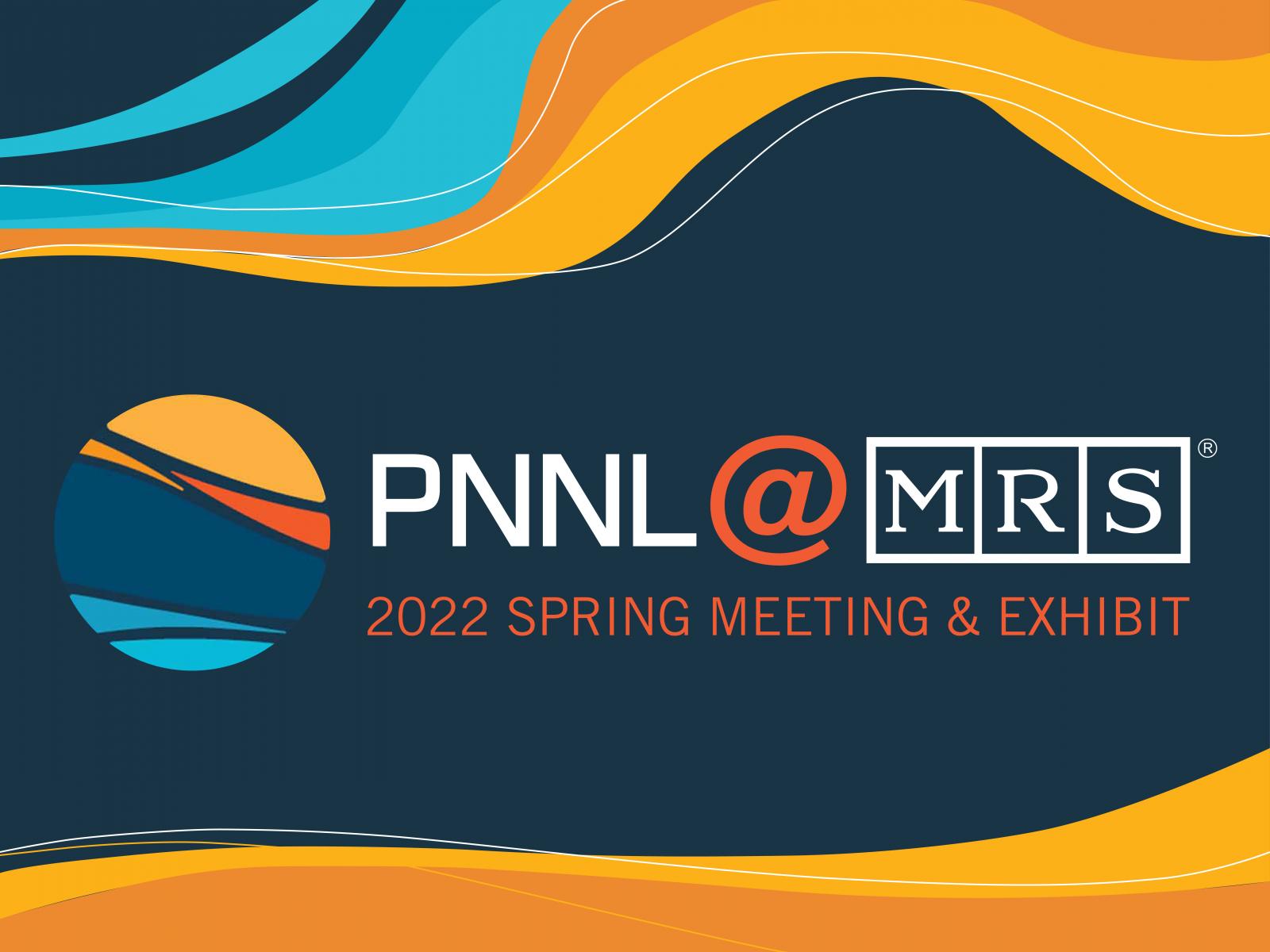
PNNL researchers are attending the Materials Research Symposium both in person and virtually in May 2022.
Image by Jamie Gority | Pacific Northwest National Laboratory
Pacific Northwest National Laboratory (PNNL) scientists will be joining their peers from around the world to discuss characterization; materials theory, computation and data; energy and sustainability; electronics, optics and photonics; manufacturing; nanomaterials; quantum; biomaterials and soft materials; and structural and functional materials at the Materials Research Society (MRS) Spring 2022 conference. Check out a sampling of PNNL speakers and their teams and add them to your MRS schedule.
Also, see below for some of our materials sciences job postings and recent features about our research.
In-Person Presentations | Virtual Presentations | Materials Sciences News | Materials Sciences Jobs
In-Person Presentations
May 9, 2022
Bioinspired Designed Interfaces Between Proteins and Inorganic Crystals for Templated Assembly and Co-Assembly
Sakshi Yadav, Shuai Zhang, James De Yoreo with colleagues Harley Pyles and David Baker (University of Washington)
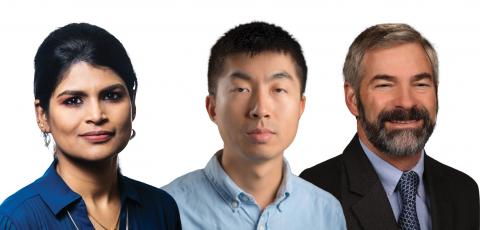
SF12.01.04 | 3 p.m. PDT
In the last few decades, inspired by nature, various approaches have been developed for building novel supramolecular nanomaterials, using proteins as versatile building blocks assembled into hierarchical structures. Developing synthetic approaches that can mimic the structural complexity and hierarchy in nature requires the ability to both design artificial proteins and master their assembly, particularly at interfaces with other materials. Recently, our team developed an approach to direct protein nanorod self-assembly at inorganic interfaces through programmed protein-protein and protein-substrate interfaces. READ MORE
Insight into the Degradation Mechanism of Li-Ion Batteries by Heat Measurement
Qian Huang (presenter), Daiwon Choi, Alasdair Crawford, Bruce McNamara, Nimat Shamim, Vish Viswanathan, David Reed, Vincent Sprenkle

EN05.02.01 | 4:30 p.m. PDT
Battery degradation depends not only on component chemistry but also complex physical-chemical processes during diverse operating conditions, including dynamic cycles, temperature/thermal effects, time between operations, and other environmental factors. In this work, the thermal effect during battery operation is proposed to play a critical role in the degradation of Li-ion batteries. Specifically, the heat generated in commercial Li-ion batteries under grid services (frequency regulation and peak shaving) is measured by using electrochemical-calorimetric method such as accelerating rate calorimetry (ARC), aiming to disclose the relationship between thermal characteristics and the degradation/reliability of Li-ion batteries in stationary applications.
Double-Layer Protection for Lithium-Metal Anode
Ju-Myung Kim, Ji-Guang Zhang, Wu Xu
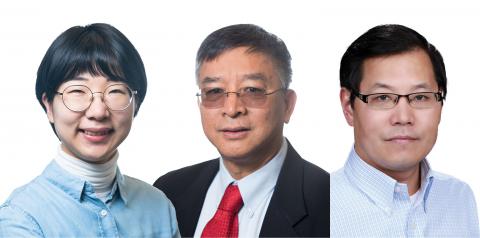
EN05.06.01 | 8 p.m. PDT
Lithium (Li) metal has been regarded as one of the most promising anodes to achieve a high-energy-density battery due to its ultrahigh theoretical specific capacity (3860 mAh g–1) and low redox potential (– 3.04 V vs. standard hydrogen electrode). However, the practical usage of Li metal anode is hindered by several challenges including the generation of heterogeneous/non-uniform solid electrolyte interphase (SEI) layer, “dead” Li formation during repeated cycling causing volume change and loss of active Li, continuous consumption of electrolyte triggering low Coulombic efficiency (CE). To address these problems, we have developed a double-layer coating to protect Li metal anode. READ MORE
Functional Composite Separator for High Energy Density Lithium-Metal Batteries
Hao Jia, Hyung-Seok Lim, Ji-Guang Zhang, Wu Xu
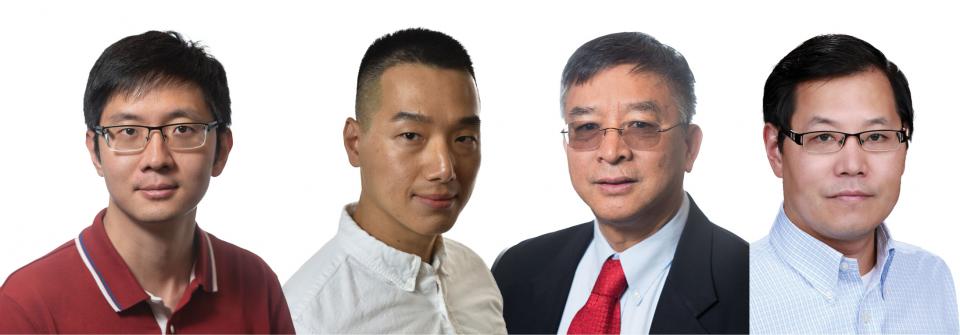
EN05.06.02 | 8 p.m. PDT
Owing to their high theoretical energy density, lithium (Li) metal batteries (LMBs) have drawn extensive attention from both industry and academia. However, the relatively short cycle life and poor safety performance of LMBs still impede their large-scale practical applications. To extend the cycle life and enhance the safety performance, we focus on the modification of a previously neglected component in LMBs, the separator. READ MORE
-----------------------------------
May 10, 2022
Physics-Constrained Deep Neural Network Method for Estimation and Simulation of Vanadium Redox Flow Battery
Qizhi He (presenter, University of Minnesota Twin Cities), Panos Stinis (PNNL), Alexandre Tartakovsky (PNNL and University of Illinois at Urbana-Champaign)
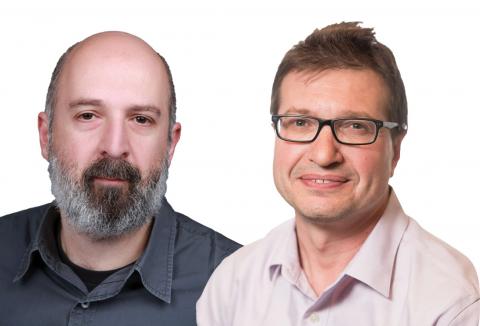
DS04.04.02 | 12:30 p.m. PDT
Modeling and simulation have been indispensable to advance the analysis and design of flow batteries. The calibration of model parameters is critical to accurately predict battery responses under different operating conditions. In this study, we propose a physics-constrained machine learning approach that allows to perform multiple parameter estimation along with numerical simulation of vanadium redox flow batteries. READ MORE
Molecular Examination of Ion Pairs Formation and Competition in Highly Concentrated Electrolyte Solutions Using In Situ Liquid SIMS
Xin Zhang, Yining Wang, Duo Song, Carolyn Pearce, Zheming Wang, Wei Wang, Kevin Rosso, Zihua Zhu

SF07.07.02 | 6:45 p.m. PDT
Understanding the structure and composition of ion complexes in extreme electrolyte systems such as Bayer liquors and highly concentrated vanadium (V) electrolytes for redox flow batteries has received enormous attentions due to its fundamental and industrial importance. However, obtaining direct molecular information on the underlying ion-ion interactions using traditional approaches such as nuclear magnetic resonance (NMR) or Raman spectroscopies is challenging due to the weakness of these interactions and/or their complex overlapping spectral signatures. Here we exploit in situ liquid secondary ion mass spectrometry (SIMS) as a new approach and show how it enables new insights. READ MORE
------------------------------
May 11, 2022
Controlling Assembly and Reorganization of 2D Protein Polymorphs at Mineral Interfaces
Ying Xia (presenter, University of Washington); Zhiyin Zhang, Nicole Avakyan and Faik Tezcan (University of California, San Diego); Shuai Zhang and James De Yoreo (PNNL)
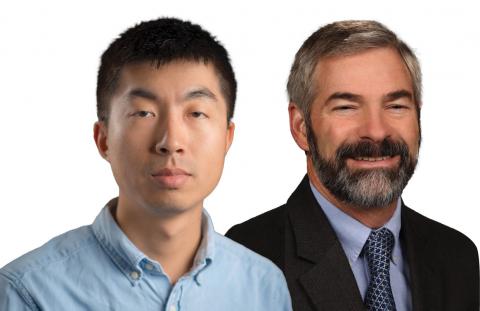
SB09.08.02 | 11:15 a.m. PDT
Protein self-assembly is a highly efficient bottom-up process for building organized tissues, including fibrils, membranes, and 3D composites. In the last two decades, engineered proteins have become versatile building blocks for designing new supramolecular materials that mimic natural biomolecular materials for applications in biomedicine, energy, and the environment, due to their monodispersity, atomically tunable interactions, and structural diversity. Although protein self-assembly at solid-liquid interfaces offers opportunities for developing hybrid materials that respond to environmental cues and external triggers, the mechanisms and controlling parameters are largely unexplored when compared to those at work in bulk solution. READ MORE
-----------------------------------------
May 12, 2022
Rocks and Metal—Parallel Solid Phase Plasticity Mechanisms and Non-Equilibrium Microstructures During Intense Shear Deformation
Suveen Mathaudhu and Arun Devaraj

SF08.15.02 | 6:45 p.m. PDT
All around us, things are constantly plastically deforming, whether it be at nanoscale atomic level in metallic alloys to the km-scale during geological flow in the lithosphere. We will present cross-cutting theories on the nature of intense pressure and shear-driven structural evolution in metals and geological materials. Novel solid-phase material deformation methods and in-situ beamline studies will reveal metallic deformation pathways that will be directly compared to the current earth science literature on ductile deformation and far-from-equilibrium microstructural evolution in rocks. The finding forecast the ability to use laboratory-scale tools and simulant materials to extend our understanding of how the world has moved underneath us and how it may deform in other parts of the universe.
-----------------------------------
May 13, 2022
In Situ Imaging of Brucite Carbonation in Supercritical CO2 Reveals an Amorphous Intermediate Seeding Crystallization
Xin Zhang, Alan Lea, Anne Chaka, John Loring, Sebastian Mergelsberg, Elias Nakouzi, Odeta Qafoku, James De Yoreo, Herbert Schaef, Kevin Rosso

CH01.12.11 | 2:30 p.m. PDT
Delineation of crystallization pathways and the role of amorphous intermediate phases leading to crystal nucleation and growth is an increasingly important but difficult challenge for experiment and theory. Even after decades of fundamental research in biomineralization, carbon capture, and pharmaceutical carrier materials the presence and influence of intermediate precursors during crystallization are not fully known. The main obstacle is in developing the ability to microscopically observe the germinal moments of crystal nucleation at the nanoscale under realistic conditions. Here we exploit a unique high-pressure atomic force microscope (AFM) to directly visualize brucite [Mg(OH)2] carbonation in water-bearing supercritical carbon dioxide (scCO2) at 90 bar and 50 °C.
------------------------------------------------
Virtual Presentations
May 23, 2022
An Automated Scanning Transmission Electron Microscope Guided by Sparse Data Analytics
Steven Spurgeon, Matthew Olszta, Derek Hopkins, Marjolein Oostrom, Sarah Akers, with colleague Kevin Fiedler (Washington State University)

CH01.13.03 | 5:45 a.m. PDT
Artificial intelligence (AI) promises to reshape scientific inquiry and enable breakthrough discoveries in areas such as energy storage, quantum computing, and biomedicine. Scanning transmission electron microscopy (STEM), a cornerstone of the dynamic study of chemical and materials systems, stands to benefit greatly from AI-driven automation. However, present barriers to low-level instrument control, as well as generalizable and interpretable feature detection, make truly automated microscopy impractical, particularly in the case of high-speed in situ studies. Here, we discuss the design of a closed-loop instrument control platform guided by emerging sparse data analytics. READ MORE
Multimodal Spectroscopic Investigation of AlCl3 Additive on Initial SEI Layer Evolution in Mg Metal Batteries
Dan Thien Nguyen, Luke Soule, Venkateshkumar Prabhakaran, Grant Johnson, Jaegeon Ryu, Vaithiyalingam Shutthanandan, Karl Mueller, Vijayakumar Murugesan

EN05.19.04 | 8:30 a.m. PDT
A detailed understanding of the chemical and structural evolutions at electrode-electrolyte interfaces (EEIs) during electrochemical charge/discharge is necessary to enable the rational design of efficient energy storage technologies including “beyond-Li ion” systems such as Mg-ion batteries. The reversible plating and stripping of Mg2+ cations on Mg metal anodes are accompanied by inefficiencies due to electrolyte decomposition and hindered mass- and charge-transport at the solid-electrolyte interphase (SEI) layers. Additionally, it appears that a so-called ‘conditioning’ step is required to establish steady-state SEI layer to enable reversible plating/stripping processes. READ MORE
Understanding how Substrate and Intermolecular Interactions Influence the Properties of Supported Polyoxometalate Spin Qubits
Grant Johnson, Oliva Primera-Pedrozo, Brian O'Callahan, Shuai Tan, Difan Zhang, Xuebin Wang, Wenjin Cao, Eric Baxter

QT07.13.03 | 1:30 p.m. PDT
Polyoxometalates (POMs) with localized spins have potential as molecular qubits for quantum computing applications. POMs may incorporate magnetic atoms such as V in their structures, producing novel molecules with promising electro/magneto-optical properties. Nevertheless, for eventual applications, molecular qubits need to be arranged in optically-addressable arrays which imposes unavoidable interactions with underlying supports and adjacent POMs. Specifically, spin-lattice (phonon) coupling is an influential decoherence mechanism that remains insufficiently understood for supported molecular qubits. Herein, we synthesized W-based POMs with different numbers of V atoms and transferred them into the gas phase using electrospray ionization. READ MORE
Characterization of Defect Populations and Evolution in Complex Oxides Using Atom Probe Tomography and Isotopic Tracers
Kayla Yano, Sandra Taylor, Sten Lambeets, Elizabeth Kautz, Sydney Neuman, Bethany Matthews, Le Wang, Yingge Du, Steven Spurgeon

EQ02.13.06 | 2:45 p.m. PDT
Perovskite oxides and semiconductors are of interest in energy storage applications due to their strongly defect-defined electronic, magnetic, and photocatalytic properties. Therefore, understanding the defect nature and evolution in these often chemically complex systems is essential to optimize performance. In this work, we develop and benchmark isotopic tracer techniques coupled with atom probe tomography (APT) to characterize defect populations and structures in oxide systems. READ MORE
Nucleation and Growth of Palladium on WTe2(001)
Prescott Evans, Peter Sushko, Zdenek Dohnálek

NM01.28.07 | 5:10 p.m. PDT
A deeper understanding of atomic-scale functionalization of transition metal dichalcogenides, especially topologically interesting variants such as WTe2, is critical in developing deployable structures in quantum information science. Discerning the role of intrinsic surface defects as adsorption and functionalization sites is a key step towards device realization. In this study, we investigated the interaction of palladium with the WTe2(001) single crystal surface as a function of coverage and annealing and deposition temperatures using scanning tunneling microscopy (STM), scanning tunneling spectroscopy (STS), and density functional theory (DFT). Palladium is deposited at room temperature in two regimes yielding clusters with a density comparable to and exceeding that of surface defects. As the defect density remains unchanged after the deposition, we conclude that no nucleation of palladium takes place on defect sites. READ MORE
Interfacial Mg++ Diffusion in Epitaxial Fe3O4 Thin Films
Krishna Prasad Koirala, Linda Wangoh, Le Wang, Mohammad Hossain, Vijayakumar Murugesan, Karl Mueller, Zihua Zhu, Chongmin Wang, Yingge Du

SF10.12.02 | 6:30 p.m. PDT
We investigate the structure and phase stability of epitaxial Fe3O4 thin films grown on MgO (001) substrates at different annealing temperatures in oxygen. The investigations were performed using x-ray photoelectron spectroscopy (XPS), atom probe tomography (APT), scanning transmission electron microscopy (STEM) and electron energy-loss spectroscopy (EELS). XPS studies show the emergence of Mg-2p signals at ~ 49.1 eV and a satellite peak at ~ 717 eV in the Fe-2p spectrum for annealed films, which become stronger as the annealing temperature increases. READ MORE
-----------------------------------------------
Recent PNNL news about materials science
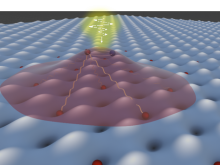
Lasers Align Electron Spin Behavior in Quantum Materials
Researchers have discovered a news way to control the quantum behavior of semiconductor materials with laser light. The discovery could lead to a new kind of quantum material. READ MORE

PNNL is Tops Again in Materials Science and Cross-Discipline Categories on Clarivate’s 2021 List of Highly Cited Researchers
Clarivate’s 2021 list of Highly Cited Researchers includes 16 PNNL experts and reflects the Laboratory’s leadership in key areas. READ MORE
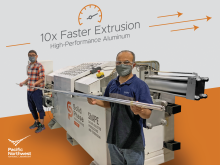
Speedier Manufacturing for Stronger Aluminum Alloys
Developed at PNNL, Shear Assisted Processing and Extrusion, or ShAPE™, uses significantly less energy and can deliver components like wire, tubes and bars 10 times faster than conventional extrusion, with no sacrifice in quality. READ MORE
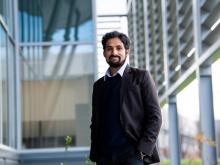
From Steel Mill to DOE Laboratory, Arun Devaraj Seeks Perfection
Materials scientist Arun Devaraj is committed to improving the quality and performance of metals with a big assist from atom probe tomography. READ MORE
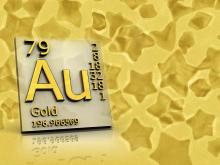
Nano-sized Gold Stars Open a Window into Predictive Materials Synthesis
A bioinspired molecule can direct gold atoms to form perfect five-pointed nanoscale stars. The feat is the product of a collaborative team from PNNL and the University of Washington. READ MORE
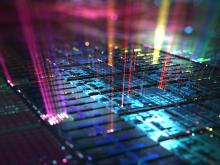
Surprising Semiconductor Properties Revealed with Innovative New Method
Semiconductor experiments reveal a surprising new source of conductivity from oxygen atoms trapped inside the material. READ MORE
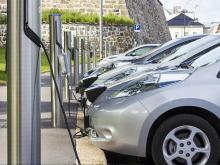
Silicon Anodes Muscle in on Battery Technology
One effort toward better batteries for electric vehicles is hitting overdrive, thanks to new findings about the desirable silicon anode. READ MORE
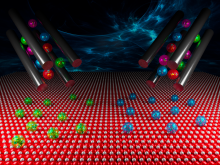
Using Ion Soft Landing to Solve Hard Energy Problems
In adjoining Energy Sciences Center laboratories, researchers develop better energy storage devices by understanding the fundamental reactions that form interfaces. READ MORE
Available Materials Sciences Job Postings
Looking at a career in materials sciences? Come work with us!
Materials Scientist - Actinide Metallurgy - closes May 29, 2022
Materials Irradiation Engineer 2 - closes May 25, 2022
Post Bachelors RA - Uranium Metallurgy - closes May 23, 2022
Post Doctorate Research Associate - Applied Battery Research - closes May 14, 2022
Post Doc Research Associate - Vitrimer Materials - closes May 14, 2022
Post Doc Research Associate - Polymer Aging - closes May 14, 2022
PhD Intern - Battery Materials - closes May 14, 2022
Post Masters Research Associate - Battery Materials and Systems - closes May 14, 2022